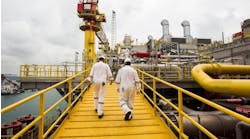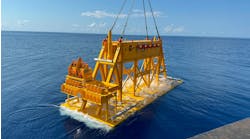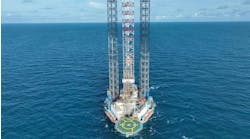Offshore separator technology handles produced water
Increasing legislation and regulations on discharge water purity standards for offshore producing platforms around the world has necessitated an examination of improved separation technologies. These new technologies must also fit within the platform’s current framework of space, energy supply and weight limits.
Enviro Voraxial Technology, Inc. (EVTN), a provider of environmental and industrial separation technologies, has reported recent successes with its separation technology for the offshore production sector. The technology deployed is one of EVTNs Voraxial Separators, used to enhance the handling of large volumes of produced water and re-injection water on a customer’s offshore platform.
The Voraxial Separator achieves efficient separation of up to three components by creating a strong vortex of liquids and solids flowing through the system, the company says. The vortex generates a centrifugal force that separates the liquids and entrained solids into separate high and low specific gravity streams. Heavier materials, such as solids or produced water are forced to the outside of the vortex while lighter materials (condensate or crude) are drawn to form the central core of the vortex. A manifold at the exit of the separation chamber collects the separated streams.
According to EVTN, Voraxial Separator technology is flexible in that it can be scaled to handle various volumes of produced fluids. Even larger models have fairly small footprints, which is important on offshore vessels where space is at a premium.
The separator is fitted with a patented, non-clog impeller which is capable of generating very high “G” forces at high flow rates. The energy requirements for separation are small, on the order of 0.01-0.03 hp/gal/min for the highest flow rates.
Separation efficiencies are reported to be quite high in a series of third-party verification tests. Oil/water separation studies run at an impeller speed of 2450 rpm and flow rate of 26 gal/min resulted in a separation efficiency of 99.98%, dropping the oil-in-water content from 7,000 ppm at the inlet to 1.6 ppm at the outlet.
Studies such as these have prompted industry interest among the likes of Shell and China Offshore Oil Bohai Corp., EVTN says.
EVTN recently received a contract from China Offshore Oil Bohai Corp. for a produced water separation application on an offshore production platform. This new contract is opening doors for the company, according to John A. DiBella, vice president of EVTN. “Virtually every platform has oil/water separation issues and we see this deployment as the initial step in penetrating the oil industry,” said DiBella.




